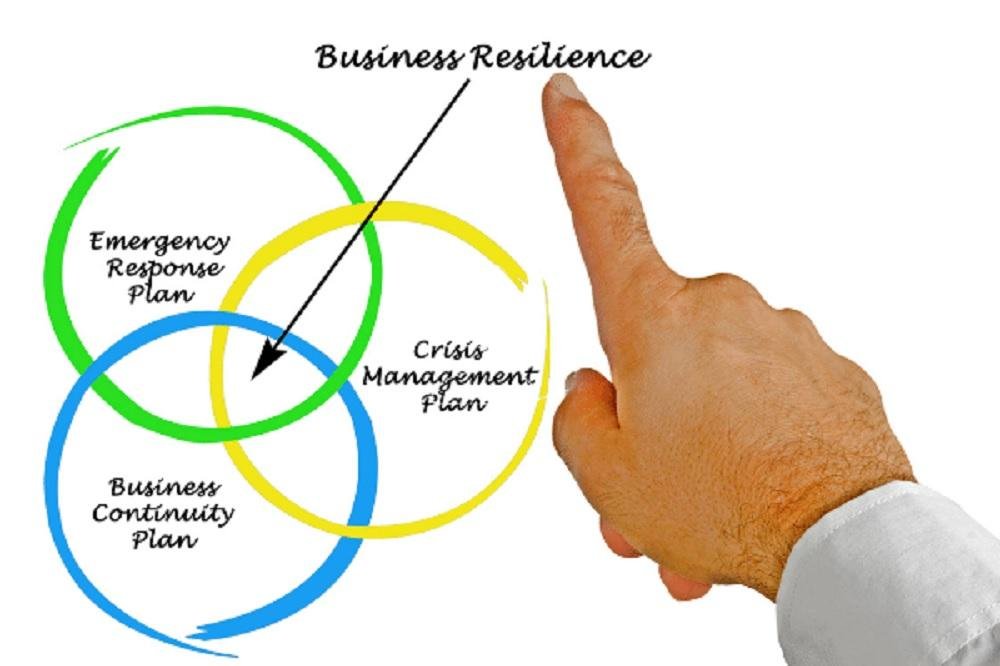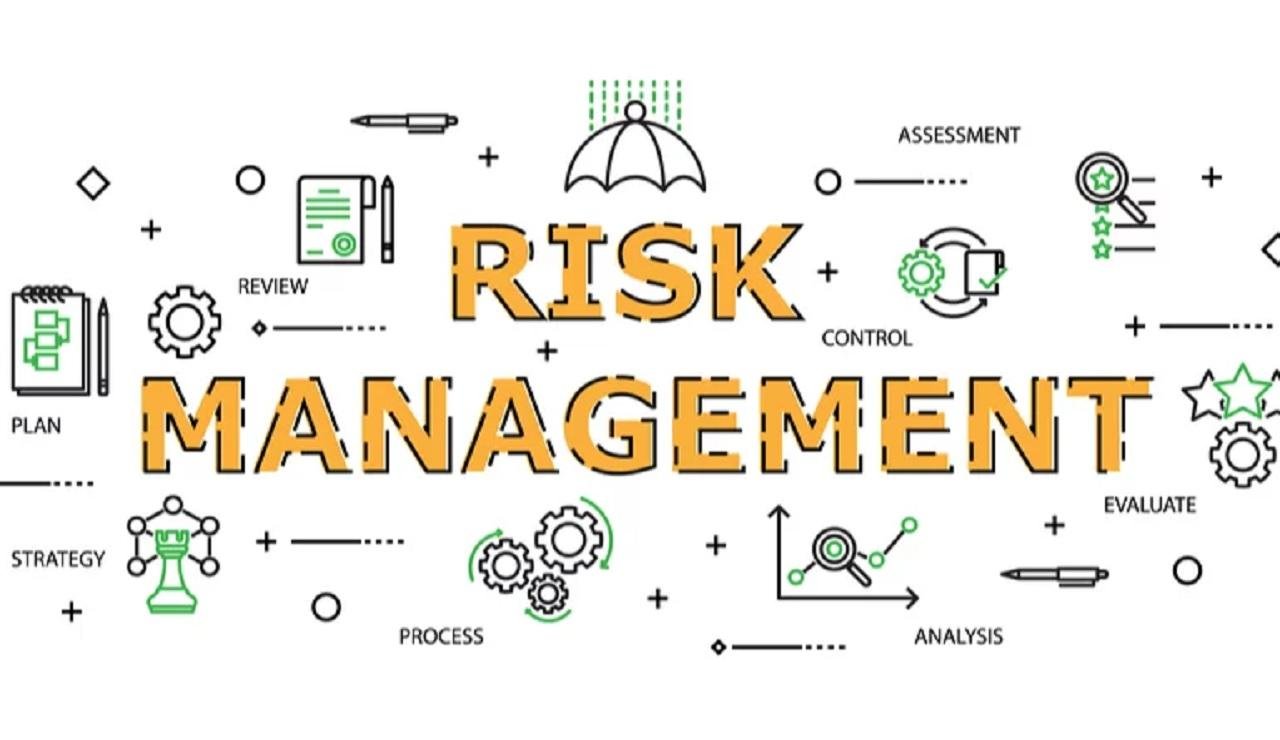Risk is an inherent aspect of every business endeavor. While it is impossible to eliminate risk entirely, effective risk management plays a crucial role in mitigating potential threats and maximizing opportunities. The risk management approach involves identifying, assessing, and addressing potential hazards and uncertainties that could affect a company’s operations, reputation, and profitability.
This article explores the significance of the risk management approach in business, highlighting how it promotes resilience, enhances decision-making, and protects long-term success.
Safeguarding Assets and Investments

In the dynamic and competitive business environment, safeguarding assets and investments is crucial for long-term success. Effective risk management allows businesses to identify potential risks and implement strategies to protect their valuable resources.
Physical Asset Protection:
The risk management approach involves assessing potential threats to physical assets such as equipment, facilities, and inventory. By identifying vulnerabilities, businesses can implement security measures to prevent theft, damage, or loss. This may include installing surveillance systems, implementing access controls, or securing premises.
By proactively managing these risks, businesses can minimize disruptions to operations, maintain productivity, and preserve their physical assets.
Financial Asset Protection:
Financial assets, such as cash, investments, and intellectual property, are essential for business growth and sustainability. The risk management approach helps organizations evaluate the potential risks associated with financial activities, including market fluctuations, currency exchange rates, or credit default.
By diversifying investments, hedging against currency risks, or implementing effective financial controls, businesses can protect their financial assets and minimize potential losses.
Intellectual Property Protection:
Intellectual property (IP) is a valuable asset that includes trademarks, patents, copyrights, and trade secrets. Risk management helps businesses identify potential risks to their IP, such as infringement, unauthorized use, or theft.
By implementing measures like securing copyrights, filing for patents, or developing confidentiality agreements, organizations can safeguard their intellectual property. This not only protects their competitive advantage but also ensures they can reap the full benefits of their innovative ideas and creations.
Supply Chain Risks:
Supply chain disruptions can have a significant impact on a business’s operations and profitability. The risk management approach enables businesses to identify vulnerabilities within their supply chain, including dependencies on single suppliers, geopolitical risks, or natural disasters.
By diversifying suppliers, developing contingency plans, or implementing risk-sharing agreements, companies can minimize the impact of supply chain disruptions and ensure a steady flow of materials or products.
Regulatory Compliance:
Compliance with laws and regulations is crucial for businesses to operate ethically and avoid legal penalties. Risk management helps organizations identify potential compliance risks, such as data privacy regulations, environmental regulations, or labor laws.
By implementing robust compliance programs, conducting regular audits, and staying updated on regulatory changes, businesses can mitigate the risk of non-compliance and protect their reputation.
Insurance Coverage:
Risk management also involves assessing the need for insurance coverage to protect against unforeseen events. Businesses can analyze potential risks and determine the appropriate insurance policies to mitigate those risks, such as property insurance, liability insurance, or business interruption insurance. Insurance provides financial protection and peace of mind, allowing businesses to recover from losses more efficiently.
By actively engaging in risk management practices to safeguard assets and investments, businesses can reduce vulnerabilities and protect their financial well-being. Effective risk management measures not only minimize the potential impact of risks but also foster a culture of proactive risk mitigation throughout the organization.
This mindset empowers employees to identify and address risks in their daily operations, leading to improved operational efficiency and resilience. Ultimately, safeguarding assets and investments through risk management is a vital component of building a strong foundation for business growth and long-term success.
Promoting Business Resilience
Promoting business resilience involves incorporating a robust CSR strategy. By aligning values with actions, businesses can drive positive social and environmental impacts, ensuring long-term sustainability.

In today’s fast-paced and unpredictable business landscape, promoting resilience is essential for organizations to adapt, recover, and thrive in the face of challenges. The risk management approach plays a key role in promoting business resilience by enabling companies to proactively anticipate and prepare for potential disruptions.
Risk Identification and Assessment:
Effective risk management begins with identifying and assessing potential risks that could impact business operations. This involves conducting comprehensive risk assessments to evaluate internal and external factors that could pose threats, such as natural disasters, economic downturns, cybersecurity breaches, or changes in market conditions.
By identifying these risks early on, businesses can develop strategies to mitigate their impact and build resilience.
Contingency Planning:
Risk management involves developing contingency plans to respond to potential disruptions. By creating well-defined plans that outline specific actions to be taken in the event of a risk materializing, businesses can minimize the impact on operations and facilitate a swift recovery.
Contingency plans may include alternative supply chain arrangements, backup systems, and data recovery strategies, or crisis communication protocols. These plans provide a roadmap for decision-making during times of uncertainty, enabling organizations to respond effectively.
Business Continuity Management:
Business continuity management is a crucial aspect of resilience planning. It involves identifying critical business functions and implementing measures to ensure their uninterrupted operation in the face of disruptions. The risk management approach helps businesses assess the potential impact of risks on these critical functions and implement strategies to maintain essential operations.
This may involve redundant systems, backup facilities, or cross-training employees to ensure continuity even in challenging circumstances.
Agile Decision-making:
Resilient organizations possess the ability to make agile and informed decisions in the face of uncertainty. Risk management provides decision-makers with valuable insights and data-driven information necessary for making informed choices.
By conducting thorough risk assessments and scenario analyses, businesses can evaluate the potential risks and rewards associated with different courses of action. This enables decision-makers to respond quickly and effectively, minimizing the negative impact of disruptions and seizing opportunities that may arise.
Learning from Past Experiences:
Risk management involves a continuous learning process. By analyzing past disruptions and their impact on the business, organizations can identify areas for improvement and strengthen their resilience strategies. Lessons learned from previous incidents can inform future risk management practices and help organizations develop a proactive approach to risk mitigation.
Stakeholder Communication and Engagement:
Effective risk management involves transparent and proactive communication with stakeholders. By keeping stakeholders informed about potential risks, mitigation strategies, and the organization’s overall resilience efforts, businesses can build trust and confidence. Engaging stakeholders in the risk management process can also provide valuable insights and perspectives that enhance the organization’s ability to manage risks effectively.
By promoting business resilience through risk management practices, organizations can better navigate uncertainties, minimize operational disruptions, and maintain a competitive edge.
Resilience allows businesses to adapt to changing circumstances, recover quickly from setbacks, and capitalize on emerging opportunities. It instills confidence in customers, employees, investors, and other stakeholders, ensuring the organization’s long-term sustainability and success.
Enhancing Decision-making

Effective decision-making is a critical component of business success. The risk management approach plays a significant role in enhancing decision-making processes by providing decision-makers with crucial insights and information necessary for making informed choices.
Risk Assessment and Evaluation:
Risk management involves conducting comprehensive risk assessments to identify and evaluate potential risks. This process provides decision-makers with a clear understanding of the potential benefits, costs, and consequences associated with different options.
By assessing the likelihood and impact of risks, decision-makers can make informed judgments about the risks they are willing to accept and develop appropriate risk mitigation strategies.
Quantitative Analysis:
Risk management incorporates quantitative analysis methods to evaluate risks and potential outcomes. Techniques such as risk quantification, probability assessment, and cost-benefit analysis enable decision-makers to assign numerical values to risks and potential rewards.
This quantitative approach facilitates more objective decision-making by providing a clear basis for comparing different alternatives.
Scenario Analysis:
Risk management involves scenario analysis, which helps decision-makers understand the potential outcomes and implications of different scenarios. By considering various potential future scenarios and their associated risks, decision-makers can assess the robustness of their strategies and make contingency plans accordingly.
This approach helps businesses anticipate and prepare for different eventualities, improving their decision-making capabilities.
Data-driven Decision-making:
Risk management emphasizes the importance of data in decision-making. It encourages organizations to collect and analyze relevant data to support decision-making processes. By gathering accurate and up-to-date information, decision-makers can make more informed judgments, reduce biases, and mitigate uncertainties.
Data-driven decision-making enhances objectivity, reduces reliance on subjective judgment, and increases the likelihood of favorable outcomes.
Read Also: How to Become an Entrepreneur
Risk Appetite and Tolerance:
The risk management approach helps businesses define their risk appetite and tolerance levels. By establishing clear guidelines for acceptable levels of risk, decision-makers can align their choices with the organization’s strategic objectives. This framework provides decision-makers with a reference point for evaluating and prioritizing risks and rewards, enabling them to make decisions that strike a balance between risk and reward.
Transparency and Accountability:
Risk management promotes a culture of transparency and accountability within an organization. By integrating risk management into decision-making processes, businesses ensure that decisions are based on sound analysis and consideration of potential risks. This approach fosters accountability among decision-makers, as they are responsible for understanding and managing the risks associated with their decisions.
Transparency in risk management practices also allows stakeholders to have confidence in the decision-making process, leading to increased trust and support.
Incorporating risk management into the decision-making process enables businesses to make more informed and strategic choices. It enhances objectivity, reduces uncertainty, and aligns decisions with organizational goals and risk tolerance.
By leveraging data, quantitative analysis, scenario planning, and transparent processes, risk management empowers decision-makers to navigate complex challenges and seize opportunities with confidence.
Mitigating Reputational Damage

Reputation is a valuable asset for businesses, influencing customer perception, brand loyalty, investor confidence, and overall business success. The risk management approach plays a crucial role in identifying and mitigating potential risks to an organization’s reputation.
Risk Management Approach – Identification and Assessment:
Effective risk management involves identifying and assessing potential risks to the organization’s reputation. This includes evaluating factors such as product quality, customer service, ethical conduct, data privacy, social media presence, and public perception. By understanding the potential risks, businesses can develop strategies to mitigate and manage them proactively.
Crisis Communication Planning:
The risk management approach includes developing crisis communication plans to respond effectively to reputation-damaging events. These plans outline the steps to be taken in case of a crisis, including communication channels, key messages, spokespersons, and timelines.
By having a well-prepared crisis communication strategy, businesses can quickly address the situation, provide accurate information, and manage public perception during challenging times.
Stakeholder Engagement:
The risk management approach emphasizes the importance of engaging with stakeholders to manage reputation risks. By maintaining open and transparent communication channels with customers, employees, investors, regulators, and the broader community, businesses can build trust and address concerns promptly.
Engaging stakeholders allows organizations to demonstrate their commitment to ethical practices, responsible behavior, and timely resolution of issues.
Monitoring and Listening:
Risk management involves actively monitoring and listening to conversations and feedback from stakeholders. This includes monitoring social media platforms, online reviews, news outlets, and industry forums to identify potential reputation risks.
By being vigilant and responsive to emerging issues, businesses can address concerns in real time, prevent negative narratives from spreading, and protect their reputation.
Ethical Practices and Corporate Social Responsibility:
The risk management approach encourages businesses to prioritize ethical practices and embrace corporate social responsibility (CSR). Acting responsibly and demonstrating a commitment to ethical conduct can enhance a company’s reputation and minimize the risk of reputational damage.
By implementing strong governance structures, ethical codes of conduct, and sustainable business practices, organizations can mitigate the risk of negative publicity and build a positive reputation.
Continuous Improvement and Learning:
Risk management involves a continuous improvement mindset, learning from past experiences, and adjusting strategies accordingly. By analyzing past reputation-damaging incidents, businesses can identify areas for improvement and implement measures to prevent similar occurrences.
This proactive approach to risk management ensures ongoing vigilance and a commitment to protecting and enhancing the organization’s reputation.
By actively engaging in risk management practices to mitigate reputational risks, businesses can protect their brand image, maintain customer loyalty, and secure the trust of stakeholders. Mitigating reputational damage through an effective risk management approach enables organizations to respond quickly and appropriately to crises, minimize negative impacts, and maintain a positive standing in the marketplace.
A strong reputation serves as a competitive advantage, attracting customers, partners, and talent, and ultimately contributing to long-term success.
Conclusion – Risk Management Approach
The risk management approach is not merely a precautionary measure but a strategic imperative for businesses of all sizes and industries. By effectively identifying, assessing, and addressing potential risks, organizations can safeguard their assets, promote resilience, enhance decision-making, and protect their reputation.
In an increasingly uncertain and complex business environment, the ability to manage risks becomes a competitive advantage. By integrating risk management into their overall strategic planning, businesses can navigate challenges with confidence, seize opportunities, and position themselves for long-term success.
Embracing a risk management approach is a proactive approach to ensure business sustainability and growth in an ever-changing landscape.






